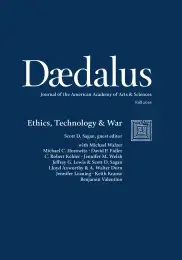The Path to Last Resort: The Role of Early Warning & Early Action
For just war doctrine to apply, the last resort requirement to exhaust all measures short-of-war must be fulfilled. Because of research and policy developments in the last fifteen years, the international community is now equipped with a richer understanding of how wars and atrocities evolve through time, improved precision about trigger points and risk factors that may accelerate that evolution, growing consensus on what prevention and mitigation steps to look for in that process, and new technologies for ascertaining these steps in order to intervene when mitigating action might deflect the escalation. It is thus argued that the responsibility of the international community to intervene in a timely and appropriate fashion has become increasingly clear and inescapable. It is further argued that the alert engagement of civil society in crafting this body of research and policy places a heavy public burden on government leaders to demonstrate that indeed all measures short-of-war have been exhausted. We now have at our collective disposal many more measures to deploy and many more witnesses to raise the alarm. Accordingly, the threshold for declaring that last resort has been reached has now become much higher.
Just war doctrine pivots on six requirements that must all pertain in order to make a moral case for going to war: a just cause, the right intention, conduct by a legitimate authority, a high probability of success in accomplishing the intended outcome, respect for the principle of proportionality, and a commitment to using force as a last resort. Despite this crisp summary list, nothing is simple in the application of these elements to a particular war or fact case. Over the centuries, most of these elements have received the close attention of religious scholars, moral philosophers, authorities on military strategy and history, and academic political scientists.
In current crises, great powers may seek to intervene in atrocity-laden conflicts where civilians and perhaps combatants are at grave risk of death or torture. The military undertaking in these crises is not one of self-defense, but rather is intended to promote international peace and security. In this context, there appear to be several reasons not to invoke just war as the legal, normative, or policy justification for international response. The grounds of just cause may prove unreliable, there may be insufficient assurance of success, or there may prove to be problems with proportionality.
The first part of this essay advances another reason why the notion of just war may not be applicable: insufficient documentation that last resort has been reached. Evidence demonstrating that all other measures short-of-war have, in fact, been exhausted is usually lacking. This gap in documenting the path to last resort may in the past have been due to disagreement over what public rationale was required, what information to privilege, or what options for intervention short-of-war might have seemed feasible. The gap may also have persisted because the international community – and civil society in particular – may have been less clamorous than they are now in seeking a full explanation for the decision of one country or countries to embark upon armed conflict in just war terms. . . .
